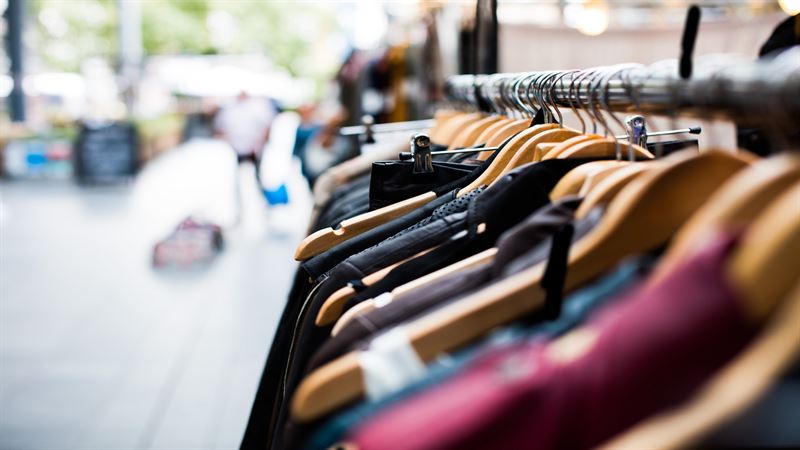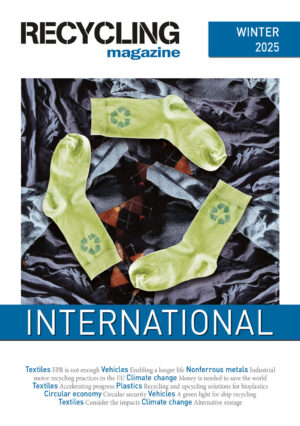The fashion industry is one of the most polluting industries and can account for up to ten percent of global greenhouse gas emissions, worldwide. In Sweden, over 90 percent of the clothes’ climate impact is linked to the purchase of newly produced goods. Therefore, researchers at Chalmers University of Technology, the University of Borås and the research institute Rise have examined alternative, more sustainable business models for the clothing industry.
“Many people have clothes hanging in the closet that are rarely or never used. Renting clothes can extend the use of each garment and thus contribute to more sustainable consumption,” says Frida Lind, Professor at Chalmers and one of the researchers behind the study.
In the study, the researchers analysed nine Swedish companies that have either tried and failed, or are ongoing in the process of creating a sustainable and desirable clothes rental company. From this analysis, the researchers identified three main business models for renting out clothes:
- Membership model: customers become members and can then borrow clothes for a certain period of time, similar to a library. This model often had an enthusiast as its founder, with a focus on sustainable consumption.
- Subscription model: customers pay a monthly fee to rent a certain number of garments. These startups worked on scaling up operations and attracting venture capital.
- Individual rental model: the company would provide specific types of clothing to rent out, often in combination with other equipment, such as outdoor clothing paired with ski equipment.
Difficult to achieve profitability
By interviewing founders, managers, and other key people from the nine Swedish companies, the researchers gained an understanding of each company’s situation.
“What struck us was that it seemed so difficult for them to make their business profitable. Several had had to end their investments for various reasons,” she says.
The researchers noted that although there was a willing customer base for renting clothing in this way, they observed various other challenges that made it difficult for companies to achieve profitability.
“Renting out clothes involves many steps where each item of clothing needs to be handled and inspected before it can be rented out again, which takes time. Companies also struggled with high costs for warehousing, logistics and laundry, for example. Especially for the subscription models, there were also difficulties in obtaining venture capital to be able to survive financially through the first phase of building the company. All this shows that these business models need time to establish themselves in the market,” she says.
Specific markets performed best
At the same time, some business models worked better than others. Companies that focused on a specific market, such as outdoor clothing, were more successful and sustainable. Especially if they also had a local connection to an outdoor recreational area.
“They seem to have found their niche and seen that there is a specific need that the customer is willing to pay for each time they need to use that type of clothing,” says Frida Lind.
The researchers also examined how the companies created value in collaboration with different stakeholders, and concluded that certain collaborations were particularly valuable.
“Rental companies that worked closely with clothing manufacturers and suppliers, such as designers with a sustainability profile, benefited greatly from this as they were able to quickly get feedback on which types of clothing were most popular. They also gained valuable information about the quality of the garments, for example if there was something that often broke,” she says.
Initiatives for change important
In the current study, the researchers have not investigated the environmental and climate impact of the business models specifically, but in general, the environmental effects of our clothes have already been well mapped. For example, previous research from Chalmers has shown that the actual production of garments accounts for 70 percent of the climate impact of Swedes’ clothes throughout their life cycle, and 22 percent of the climate impact is caused by customers’ shopping trips. In the European Union, five million tonnes of clothing are discarded each year – around 12 kilos per person, and in the USA, the average American generates 37 kilos of textile waste each year.
Frida Lind believes that there is a great deal of room for environmental benefits through reduced clothing purchases and extended use of existing garments – especially if it can be done without extra car journeys for consumers.
She emphasises that even if some of the companies and services in the study have not survived, all initiatives that can contribute to the sustainability transition are important. Not least because they help to change attitudes about clothing consumption and increase knowledge about what can and cannot work.
“Our study can be an important contribution to the fashion industry’s sustainability transition, as it shows the possibilities of new business models in this industry. We hope that it can have an impact on decision-makers who need a basis for establishing incentives and financial motivation for a more sustainable fashion industry. Because we see that new and more sustainable business models require time and a long-term perspective to be able to establish themselves,” she says.
Recommendations for the industry
Based on the study’s results, the researchers give a number of recommendations to those who intend to try renting clothes as a business model:
- Focus on niche markets based on target group and product type where the need is clear
- Develop partnerships with suppliers to improve products based on rental experiences.
- Think about logistics and transport in the rental model right from the start to be able to get the model scalable.











